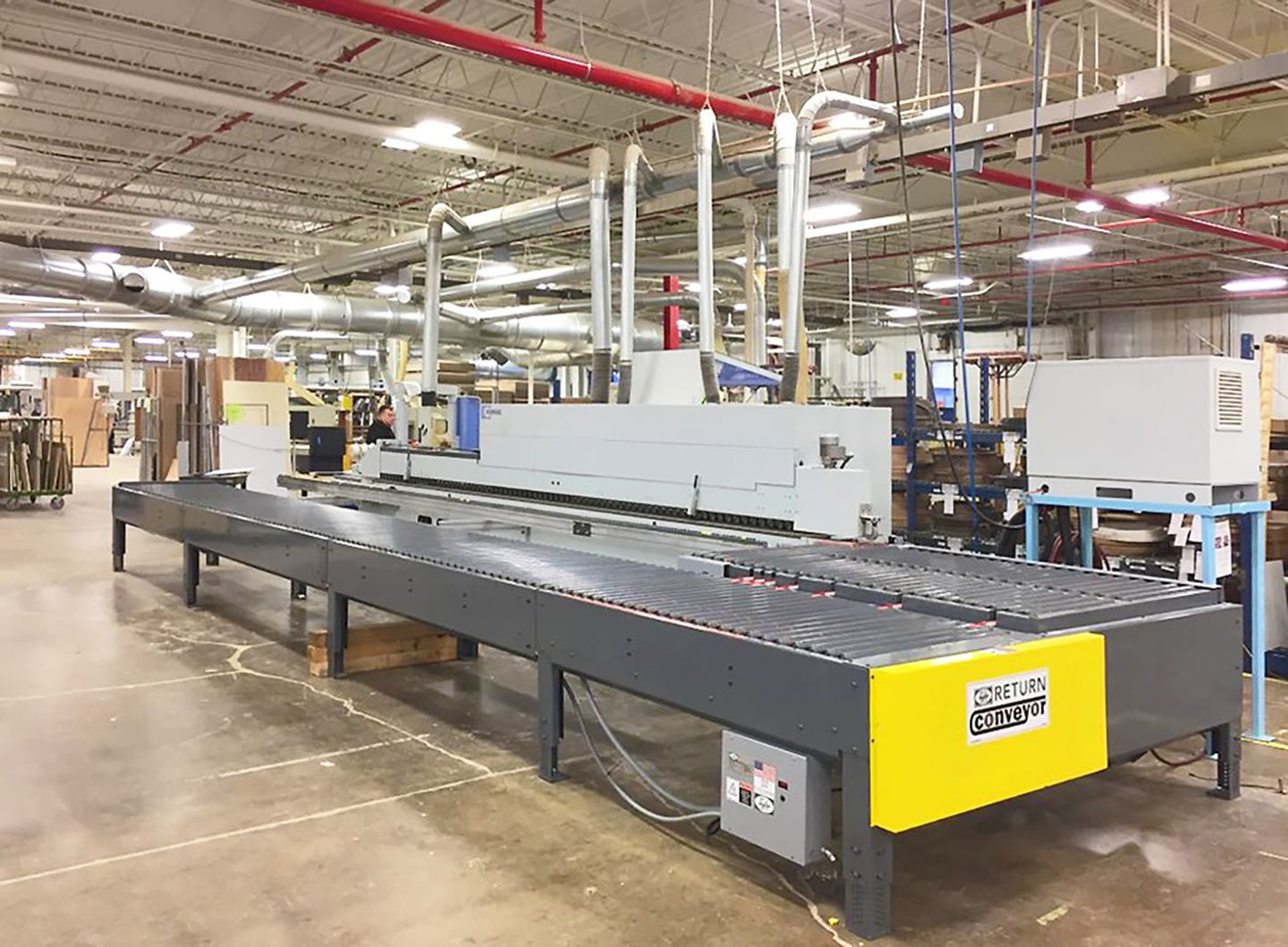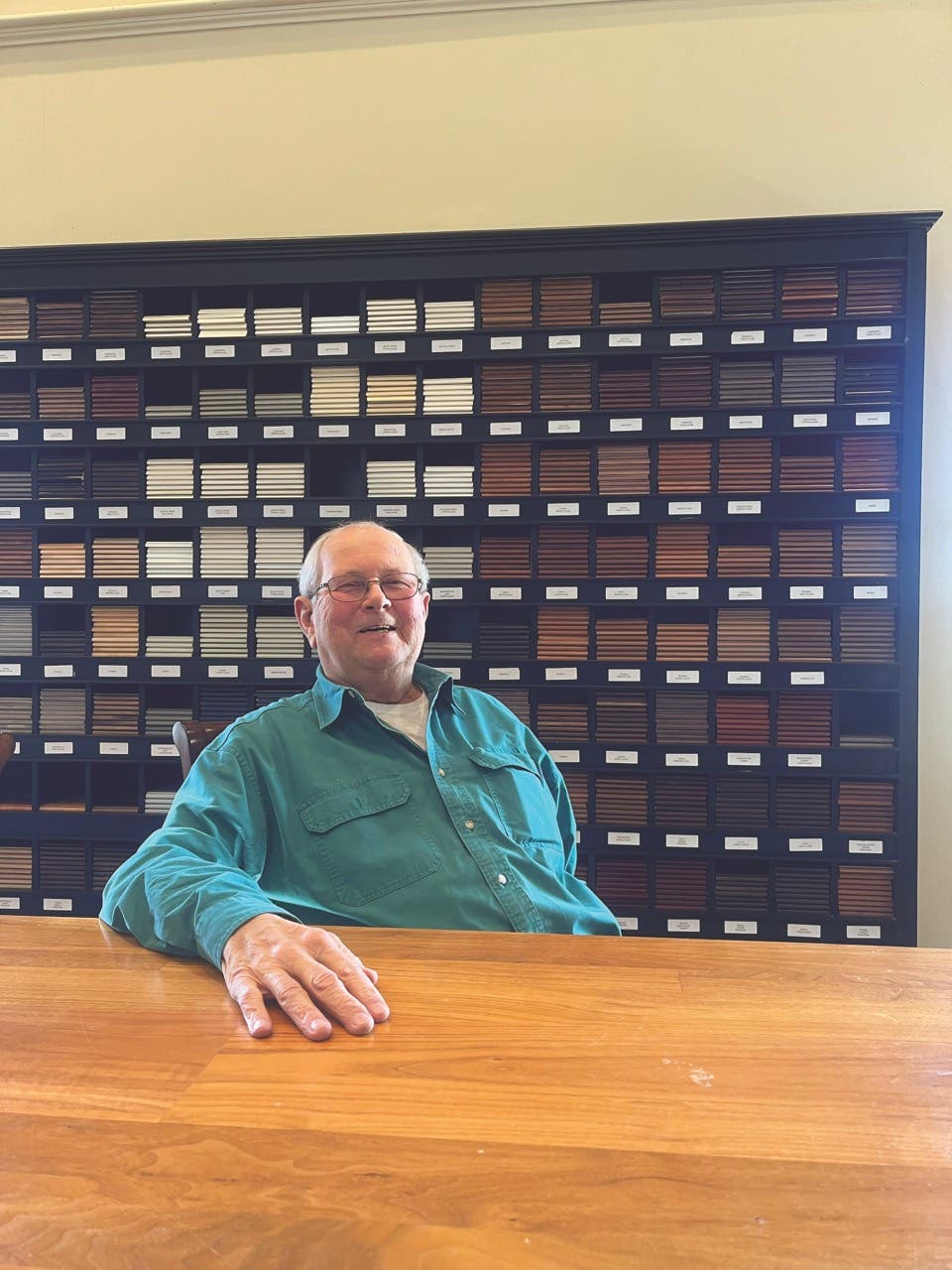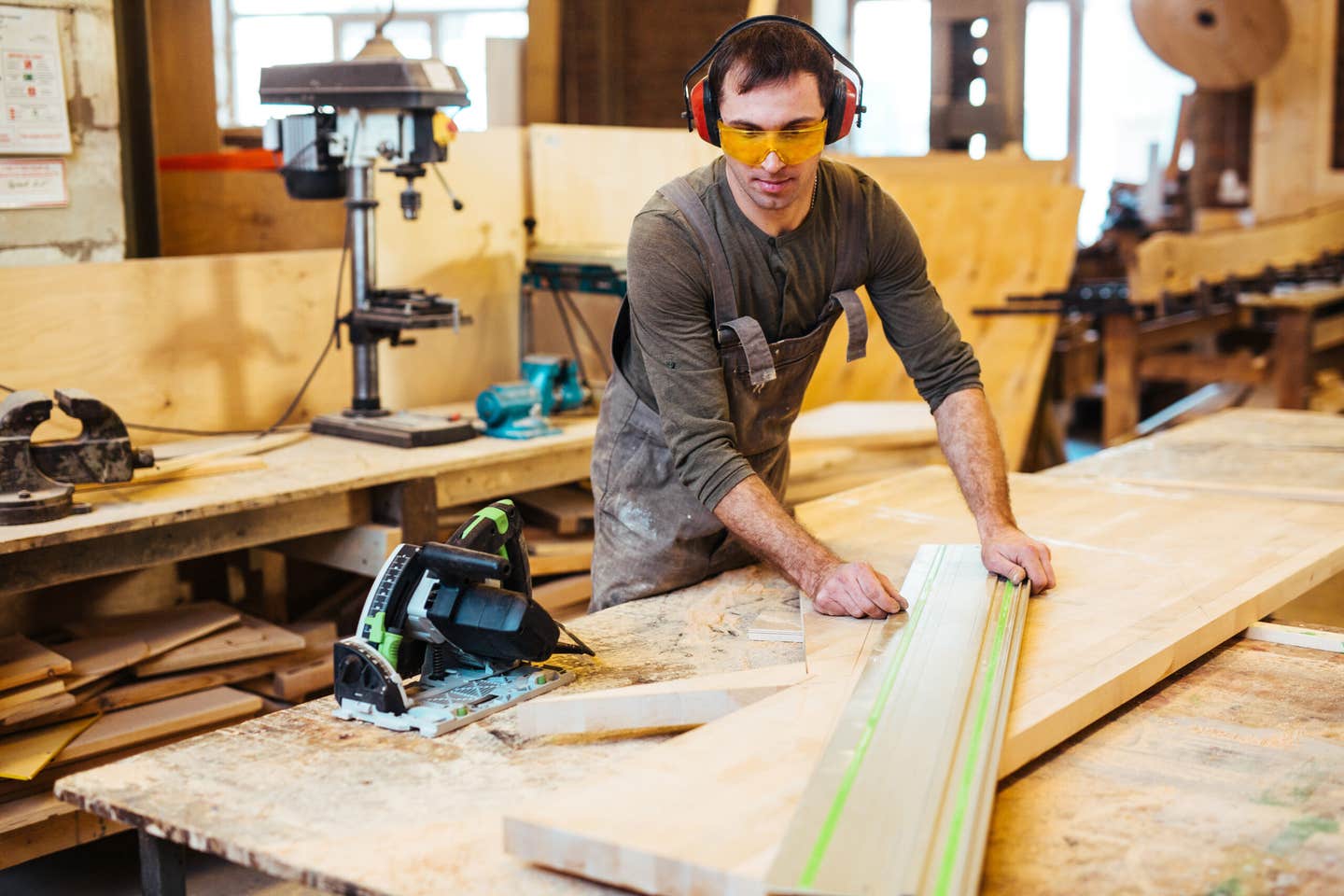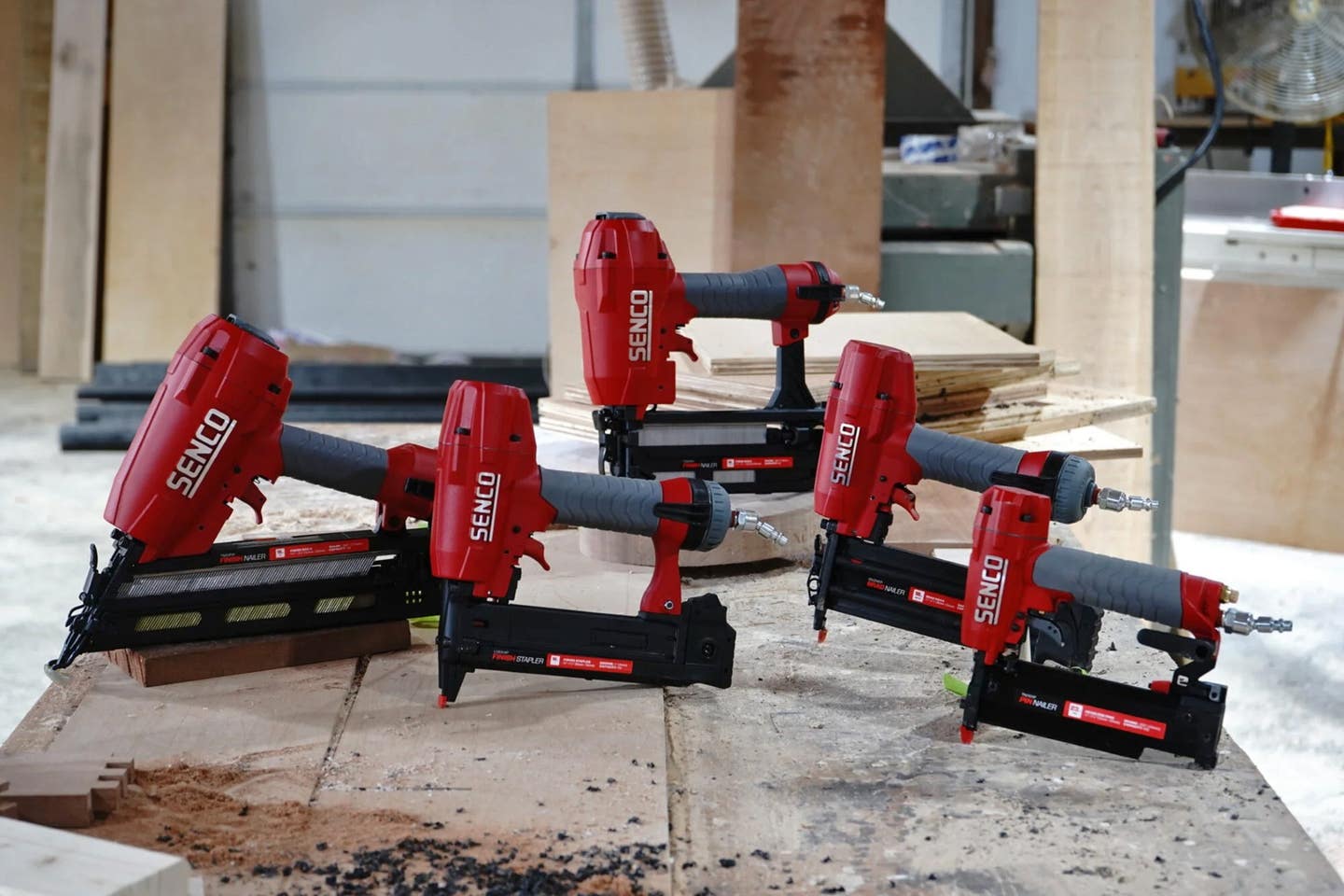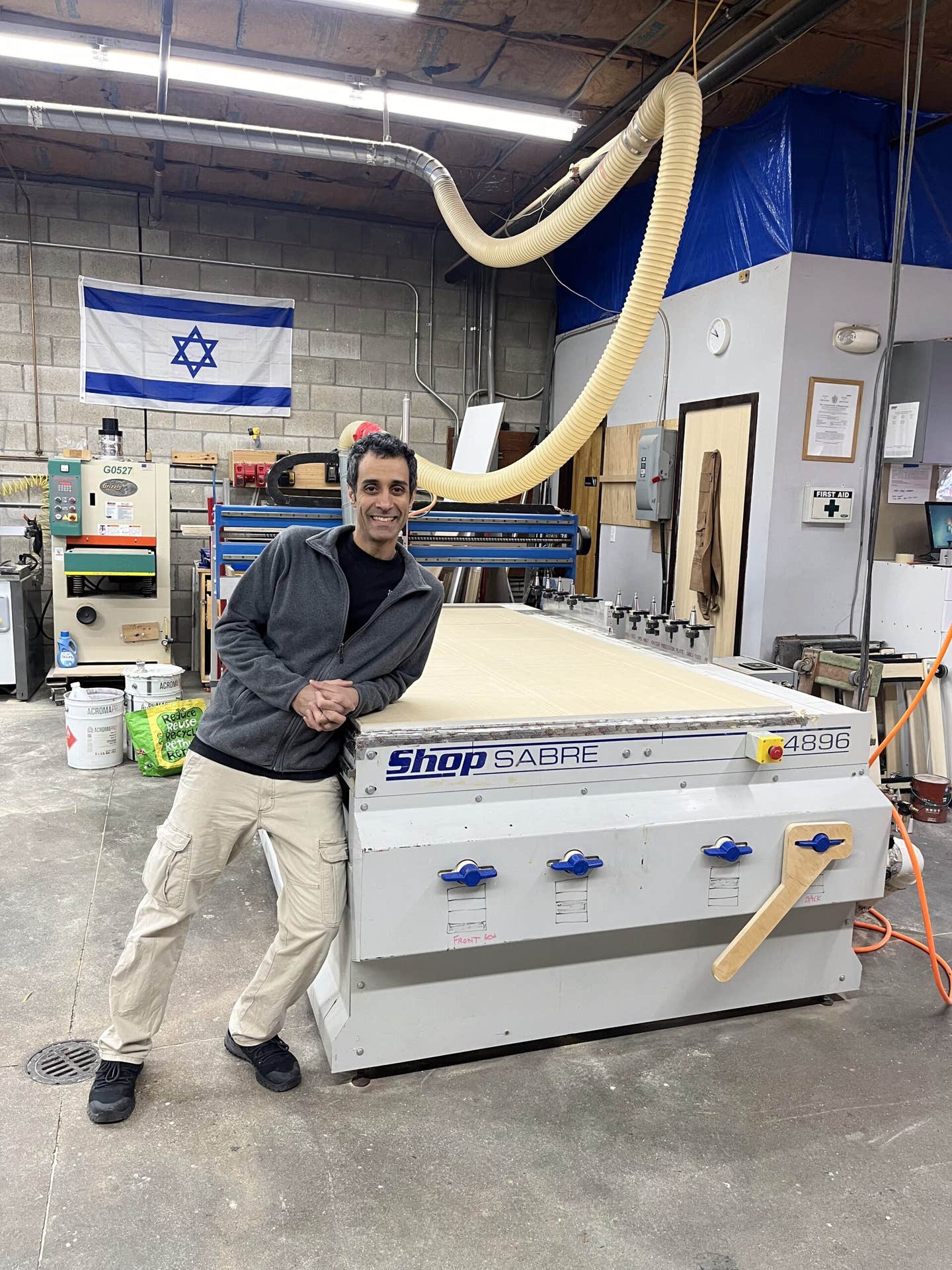Broader horizons
From countertops to range hoods, flooring, backsplashes and even appliance panels, today’s designers work in a variety of media to create an ergonomically and aesthetically fulfilling environment. Wood alone doesn’t…
From countertops to range hoods, flooring, backsplashes and even appliance panels, today’s designers work in a variety of media to create an ergonomically and aesthetically fulfilling environment. Wood alone doesn’t supply all the textures, tones and colors required for a great kitchen or commercial space. And woodshops that traditionally sub out all those other elements could be missing some opportunities.
No, it’s not time for your lead cabinetmaker to invest in cold chisels and blocks of granite. But much of the machinery that woodshops use can also work with other materials such as non-ferrous metals, tile and plastics. And adding non-wood elements such as art glass or steel into projects at the shop before delivery, rather than subbing them to another artisan on site, allows a woodshop to offer and control a larger design menu.
Where this is leading is that with ever-more-versatile machinery and greater potential for working with materials such as plastics, metal and even stone, the skill set in the custom woodshop seems to be evolving. Every year, there is a bigger emphasis on design and the ability to work with color, shape and tactile sensitivity (how things feel to the fingers). And, on the shop floor, skills are evolving that use existing machines and new technology to meet those design goals.
Building boxes is a noble profession, but there are some trends in the industry that don’t always favor the future of small custom shops. Outsourcing is now mainstream and, while buying completed boxes, doors and drawers is a great way to expand a business (allowing even a smaller shop to run several jobs simultaneously), it also means that many cabinetmakers are no longer just making cabinets.
For these woodshops, the focus is by necessity turning from building to design, and working in other media can present a strong opportunity to let the shop’s catalog separate itself from the crowd. In a marketplace that now includes a vast array of online options, a local cabinetmaker is competing with remote websites that offer delivery to his/her customers of high-quality kiln-dried casework. Many of those finished boxes are being shipped to contractors at lower retail than the custom shop’s actual cost.
The basic nature of the neighborhood woodshop is changing. The trend is toward larger shops become outsourcing suppliers while smaller, local ones evolve into more retail-oriented salesrooms that only build a few specialized items in-house. There will always be mass retailers such as IKEA and Cabinets To Go, as there will always be a place for small custom shops that work well with contractors and end users. But the level of wood-based manufacturing in those local shops is already dropping dramatically as shops find that both cost and convenience are better served by buying in.
Remaining competitive
Survival in this new market comes down to diversity and customer service — providing the personal touches that an electronic showroom simply can’t emulate. Having somebody arrive on site and physically measure the space, recommend solutions and shake hands is still far more reassuring for occasional buyers than shopping online. But it’s not enough alone to stem the tides of change. The more elements of the design that a shop can deliver profitably in-house, the better chance it has of making a profitable sale.
Custom is still key, but its format has been redefined. Custom work is no longer just about better materials and superior craftsmanship. It is now also about one-stop shopping and convenience, being able to deliver a kitchen and not just the cabinets. Sometimes, that will mean working in more media than wood. There was a time when all that meant was adding punched tin panels to a pantry cabinet or stainless-steel legs to an island. Now it has the potential to mean adding one-of-a-kind parts that are designed and made in-house using machines that were designed to work wood, but can also work in a number of other materials. Even those stock tin panels can now be milled in aluminum sheet stock on a CNC right in the woodshop with virtually no limits on the artwork: if it can be drawn, it can be made. So how come so few shops are actually doing that?
A lot of the hesitation has to do with setup times, dealing with non-wood waste extraction, investing in job-specific tooling and other tactical issues. But a lot also has to do with personnel: perhaps there’s a lack of design/art talent or training in the machines’ potential or even just a conservative attitude that is uncomfortable stretching the envelope.
If those objections are overcome, one of the more positive aspects of diversifying is that mixed-media options won’t be restricted to just building kitchens. A shop that develops skills in media other than wood will be able to keep its CNC busier and reduce downtime, sometimes dramatically. Having the capacity to work in metal and plastics, for example, can open the door to manufacturing custom or unique parts for other non-wood industry related customers — anything from advertising specialties to components for major manufacturers such as auto plants, aeronautics, boatbuilding and a host of other parts buyers. A small woodshop with a decent CNC setup is ideally suited to handling short runs of custom parts. It can bridge the gap between one-of-a-kind, hands-on work and mass factory manufacturing. There’s a niche here and an opportunity.
It boils down to this: if the machine can work in plastics, then why shouldn’t the shop? Why can’t a woodshop use the people, equipment, infrastructure and experience that it gained in working wood to also work other materials?
Use existing potential
As any shop owner knows, a CNC isn’t restricted to routing MDF and hardwoods. Some can be adapted to engrave or accept a 3-D printer, a laser and even work with plasma cutters. Most will work in composites, aluminum, plastics and foam — and some can even mill or engrave mild steel. This makes them ideal for pattern making, sign building and a host of other tasks beyond casework. Some models can also 3-D carve in resins when equipped with aggregate heads, opening up the possibility of making decorative parts such as corbels, lamp bases and high-end, ornate moldings such as picture frames without joinery at the corners.
Across several industries, the term CNC is being replaced by the phrase “digital fabrication.” That’s because numerically-controlled machines no longer just subtract (cut, rout, abrade) to create objects. Some can also add via 3-D printing. The terminology here is basic. If you remove material, it’s a subtractive process. If you add material to make something, it’s called additive.
Adding gives a lot of woodshops the ability right now to use existing machines to build up parts in layers. While 3-D printing technology is still in its infancy, it’s developing at breathtaking speed. For now, it is generally used to build prototypes in plastics that wouldn’t stand up to daily industrial use, but production-grade printers are not too far away. In fact, a number of companies are working on machines that simultaneously combine additive and subtractive technologies in one unit, while many more are beginning to offer 3-D printing heads for existing router platforms.
In June, for example, Indianapolis-based Hurco North America (hurco.com) announced that owners of its vertical machining centers will have the ability to transform their WinMax part programs to a 3-D-printed rapid prototype directly on their CNC machine, using an optional spindle-powered wireless accessory that Hurco will unveil at the International Manufacturing Technology Show. The event takes place Sept. 12-17 at McCormick Place in Chicago.
What the company is saying is that some of its customers’ CNCs that were built for working wood will now accept a new 3-D print head that extrudes plastic PLA filament. The concept here is that the additive process allows woodworkers to work in plastic in a way that traditional subtractive methods simply won’t allow, thus bringing the potential for incredible detail to CNC manufacturing. In the words of Hurco president Greg Volovic, this “takes commercial desktop 3-D printing technology to the next level, allowing users to take full advantage of the size of the machining center.” That’s a significant point. Woodshops are in a unique position here: most of the platforms being used to mill case parts and doors are a lot larger than standard 3-D printer platforms.
Volovic adds that “we’ve designed this product to make it easy for people who have no solid modeling experience.” That has been a challenge for woodworkers looking to expand into other media. Three-dimensional modeling doesn’t exactly dovetail into cabinet CAD and shops have been understandably reluctant to spend time and money training people in skills that might or might not be used, rather than those that are being used daily. Besides which, solid modeling is taking a woodshop one more step away from the traditional wood manufacturing processes and thereby introducing a new defining moment that changes the way in which we think of ourselves as woodworkers. It’s a bit of an identity crisis.
We’re getting closer every year to training new employees on tablets, rather than table saws.
Smart shop owners recognize that such a trend is inevitable in a world that is increasingly automated. And thankfully some high schools are beginning to as well. For example, San Juan High School in Citrus Heights, Calif., now offers a course called “Introduction to Innovation & Design,” providing students with hands-on skills in product design and innovation in wood, textiles and alternative materials.
To get some idea of how these students are learning to work in mixed media, visit Facebook.com/SanJuanHighSchoolInnovationDesign. Such forward-thinking programs are beginning to change the way woodshops now hire for the shop floor. It’s a lot easier to start new employees in a CNC environment when they are already familiar with CAD, 3-D printing and modern design and manufacturing practices. And inversely, introducing new media in the woodshop will help attract smart and savvy young people to our industry. Where they once saw woodshop in school (and as a career) as a lot of manual labor and sandpaper, they are now beginning to see the possibility of being technically creative — perhaps even artistic.
For shop owners who think the transition from clamps to keyboards is down the road somewhere, have a chat with an autoworker in Michigan. It’s easy to find one with time for a coffee: robots have replaced hundreds of thousands of their jobs. The biggest threat to traditional woodworking isn’t globalization. It’s automation. Machines reduce market prices through more efficient production. Our ability to work in other materials and incorporate them into projects in a way that is appealing to customers and profitable to the shop is one of the best ways to buck the trend.
Outsourcing mixed media
Having a custom cabinet shop supply all of the wood-based elements in a kitchen, office or commercial architectural millwork job is not surprising. But having a woodshop also supply plastics, metal and even stone is a concept worth exploring. The defining constraint here is: can the shop make enough of a margin on these elements to cover the cost of handling them? And a secondary concern is this: even if the margins aren’t great, is it worth making the effort just to keep customers happy?
Sometimes a shop will introduce non-wood components in response to a customer’s needs, but at other times the kitchen designer will offer more non-wood choices in an effort to influence the customer and create new demand. That active approach, where one leads the choices rather than following them, can be a lot more profitable. It means that the designer is influencing materials choices more than the customer and, as such, can steer the conversation toward outsourced materials that provide an acceptable margin.
Outsourcing isn’t new. The cabinet industry has outsourced all of its hardware (slides, pulls, etc.) since Day 1. Nobody ever called it that, but buying a complete component from an independent supplier and then incorporating it into a custom job is the definition of outsourcing. Today, a lot of shops are also outsourcing their doors, drawer boxes and fronts — and even full cabinets. We can’t always physically work in-house on non-wood materials such as stone or steel, but we can still outsource them and incorporate them in designs before delivering them as part of the finished project.
Some materials are more compliant than stone. For example, woodshops have always milled moldings in-house or else they have used locally available stock wood moldings in creative ways, especially during installs. Today, many shops outsource moldings that are no longer made of wood. Foil doors and colored cat finishes have come a long way and they marry well with these non-traditional moldings and accents. Non-wood materials often offer more flexibility than wood, too.
Looking to the future
In his 2008 book, “Change or Die” (Harper Collins), author Alan Deutschman concluded that “although we all have the ability to change our behavior, we rarely ever do. From patients suffering from heart disease to repeat offenders in the criminal justice system to companies trapped in the mold of unsuccessful business practices, many of us could prevent ominous outcomes by simply changing our mindset.”
While the woodshop industry is hardly at that point, it pays to examine our business practices regularly and make adjustments to comply with evolving markets and technology. Deutschman’s point is that we all know what we have to do, but only the successful few actually make the needed course corrections. It’s more comfortable to stay the course, to dwell in the familiar.
Those days might be waning. In an industry that is increasingly automated, outsourced and specialized, small- to mid-sized woodshops especially need to be more versatile, adaptive and responsive if they want to survive, let alone thrive. Part of that response is looking at ways our existing equipment can work with new materials and part of it is discovering how we can enhance traditional designs with new non-wood components.
This article originally appeared in the August 2016 issue.



